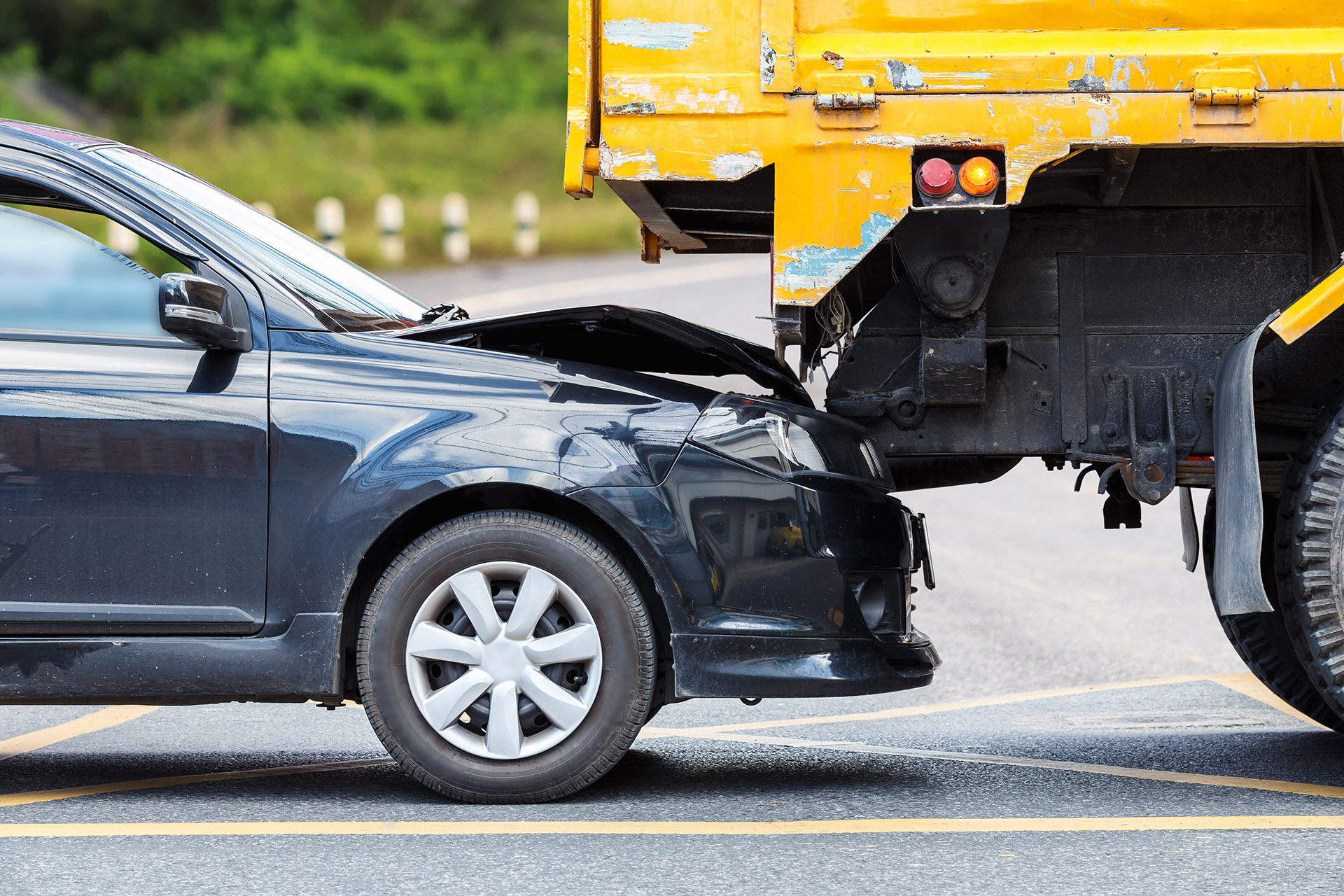Yes No
Share to Facebook
How Far Back Is a Vehicle Legally Required to Drive Behind the Vehicle In Front?
A Driver May Be Charged With Follow Too Closely If the Driver Fails to Keep a Reasonable and Prudent Distance Between Vehicles. Commercial Vehicles Are Required to Keep Back a Distance of Sixty (60) Meters When the Vehicle Is Traveling Sixty (60) Kilometres Per Hour or More.
Understanding the Strategies For Fighting a Following Too Close Charge and Protecting Your Driving Record
 The traffic ticket charge of follow too closely or following too close is more commonly known as tailgating. Regardless of the name a person chooses to call the driving offence, many people are actually unaware of what legally constitutes as following too close or tailgating. Interesting, only commercial vehicles are prescribed a specific distance while other vehicles are required to keep back at an unspecified distance.
The traffic ticket charge of follow too closely or following too close is more commonly known as tailgating. Regardless of the name a person chooses to call the driving offence, many people are actually unaware of what legally constitutes as following too close or tailgating. Interesting, only commercial vehicles are prescribed a specific distance while other vehicles are required to keep back at an unspecified distance.
The Law
Indeed, as stated above, with an except for commercial vehicles, where the definition is specified, the law of following too close lacks a specific distance for what actually is too close when following another vehicle. The law regarding following too close is found at section 158 of the Highway Traffic Act, R.S.O. 1990, c. H.8, which says:
158 (1) The driver of a motor vehicle or street car shall not follow another vehicle or street car more closely than is reasonable and prudent having due regard for the speed of the vehicle and the traffic on and the conditions of the highway.
(2) The driver of a commercial motor vehicle when driving on a highway at a speed exceeding 60 kilometres per hour shall not follow within 60 metres of another motor vehicle, but this shall not be construed to prevent a commercial motor vehicle overtaking and passing another motor vehicle.
As shown, unless a commercial vehicle was involved and thus the law specifies a following distance of at least sixty (60) metres when the commercial vehicle is traveling at more than sixty (60) kilometres per hour, all other vehicles are without a specified distance and instead must follow at a distance for which a court would deem is reasonable and prudent for the road conditions at the time.
Whereas the law is without a specified distance, except for commercial vehicles, a general rule of thumb is often used by drivers, which is:
- To follow at a distance that is at least two seconds behind; or
- To follow at a distance that is at least one car length for every ten (10) kilometres per hour of speed that the vehicle is traveling.
Proving the Charge
Evidence of Distance is Required
Interestingly, a conviction for follow too closely per section 158 of the Highway Traffic Act is often the result where a rear-end accident occurred and the driver who rear-ended the vehicle is front was initially charged with careless driving. Typically in this situation, the police officer laying the charge will use the careless driving charge per section 130 of the Highway Traffic Act, rather than a follow too close charge per section 158 of the Highway Traffic Act, as the offence of careless driving is often easier to prove in court; however, prior to a trial on the careless driving charge, the accused driver may be offered an opportunity to accept a conviction on the charge of following too closely within a plea deal. The reason that a follow too closely charge may be perceived as more difficult to prove in court is that with a follow too closely charge, actual evidence of an unreasonable distance between the vehicles involved in the incident is required; however, for a careless driving charge, the evidence needs only to show that the accused driver was driving without due care and attention. This need for subjective evidence was well stated in the case of R. v. Haddad, 2009 ONCJ 536 wherein it was said:
[46] The prosecution has failed to adduce any expert opinion evidence which could establish beyond a reasonable doubt, that the defendant’s driving behaviour herein constituted following too closely within the meaning of sub-section 158(1) of the Highway Traffic Act. Such expert opinion evidence might include a statistical analysis of driver reaction times and average stopping distances given the relative speed of the vehicles and the traffic, road and weather conditions.
[47] As stated by Roberts J. in Regina v. Schmidt, supra., in order for the prosecution to prove the offence of “follow too closely”, beyond a reasonable doubt, there must be some evidence that the following distance constituted a danger having due regard to the speed of the vehicles, and the traffic and highway conditions. This evidence needs to be more substantive than a concern in the mind of the driver being followed.
[48] Furthermore, as stated by Clark J. in Regina v. Borg, supra, a conviction for the offence of follow too closely must be based on more than a subjective assessment of the sufficiency of the following distance, by a police officer. In reaching this conclusion, Mr. Justice Clark adopted the reasoning of Roberts J. in Schmidt, supra. and Cornish J. in Regina v. Bookman, supra. Mr. Justice Clark interpreted Madam Justice Roberts’ decision in Schmidt as standing for the proposition that after considering the evidence of the factors enumerated in sub-section 158(1) of the Highway Traffic Act; there must be “evidence of objective danger” in order for a Court to find that the distance between two motor vehicles was unreasonable.
[49] In his decision in Borg, supra., Mr. Justice Clark noted that the evidence of the police officer that the defendant’s motor vehicle was following his motor vehicle by a distance of approximately six to eight feet over a sustained distance of 1,500 feet at a speed of 110 to 115 kilometres per hour, constituted only a subjective assessment of the evidence and did “not on an objective standard deviate beyond what might be considered as reasonable and prudent in the circumstances”.
[50] In light of the reasoning enunciated in the Bookman, Schmidt and Borg decisions, as aforesaid, which is binding on me, I am of the view that there is insufficient objective evidence which convinces me, beyond a reasonable doubt of the guilt of the defendant on the subject charge. The prosecution has failed to prove, beyond a reasonable doubt, that the defendant’s actions in following the motor vehicle in front of him by a motor vehicle length or less, was, in the context of the factors enumerated in subsection 158(1) of the Highway Traffic Act, both unreasonable and imprudent.
Defence Strategy
To fight a follow to closely charge, among other things, careful review of the available evidence, including any expected testimony from expert witnesses for the prosecution, is necessary. As above, without qualified objective evidence that the accused driver was failing to keep a reasonable and prudent distance, the prosecution should fail. For commercial vehicles a credible eyewitness or photographic evidence, among other things, will be required to confirm that the accused was traveling over sixty (60) kilometres per hour while at a distance of less than sixty (60) metres.
Penalties
Upon a conviction for the offence of following too close contrary to section 158 of the Highway Traffic Act, a driver:
- May be fined between $60 and $1,000 plus a victim surcharge and a court costs fee;
- May receive four (4) demerit points and subjected to cumulative points penalties;
- May be suspended for thirty (30) days depending upon licencing status; and
- May be subjected to increased insurance rates for the next three years.
The fine upon a conviction for the offence of following too close per section 158 of the Highway Traffic Act is unstated; and accordingly, the fine is prescribed by the General Penalty within section 214 of the Highway Traffic Act which allows for a range between $60 and $1,000 subject to the discretion of the court. Specifically, section 214 of the Highway Traffic Act says:
214 (1) Every person who contravenes this Act or any regulation is guilty of an offence and on conviction, where a penalty for the contravention is not otherwise provided for herein, is liable to a fine of not less than $60 and not more than $1,000.
With the potential for significant adversity upon conviction for follow to closely, get a professional opinion regarding the case strategy that serves your best interests.
Summary Comment
A driver may be charged with the offence of follow to closely if the driver fails to keep a reasonable and prudent distance behind another vehicle. For commercial vehicles the distance required is sixty (60) metres if the vehicle is traveling more than sixty (60) kilometres per hour. A conviction for follow to closely may result in a fine, demerit points, increased insurance rates, and even licence suspension in some circumstances.


